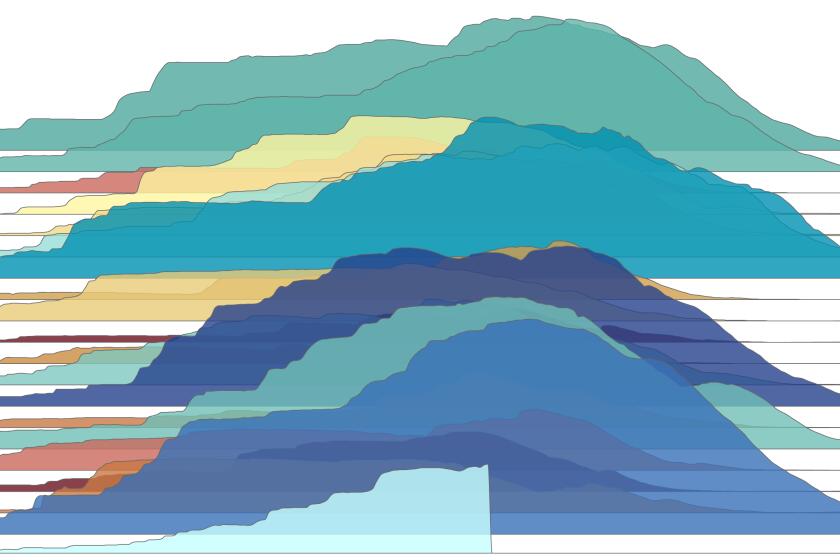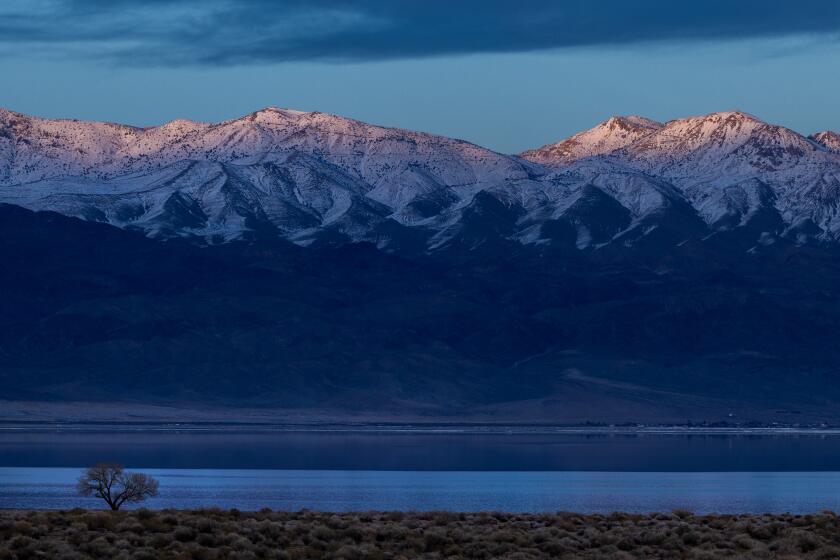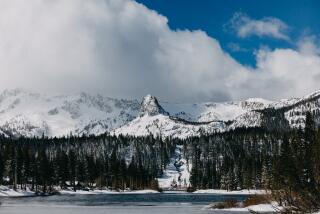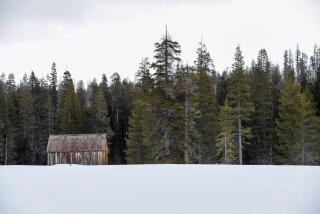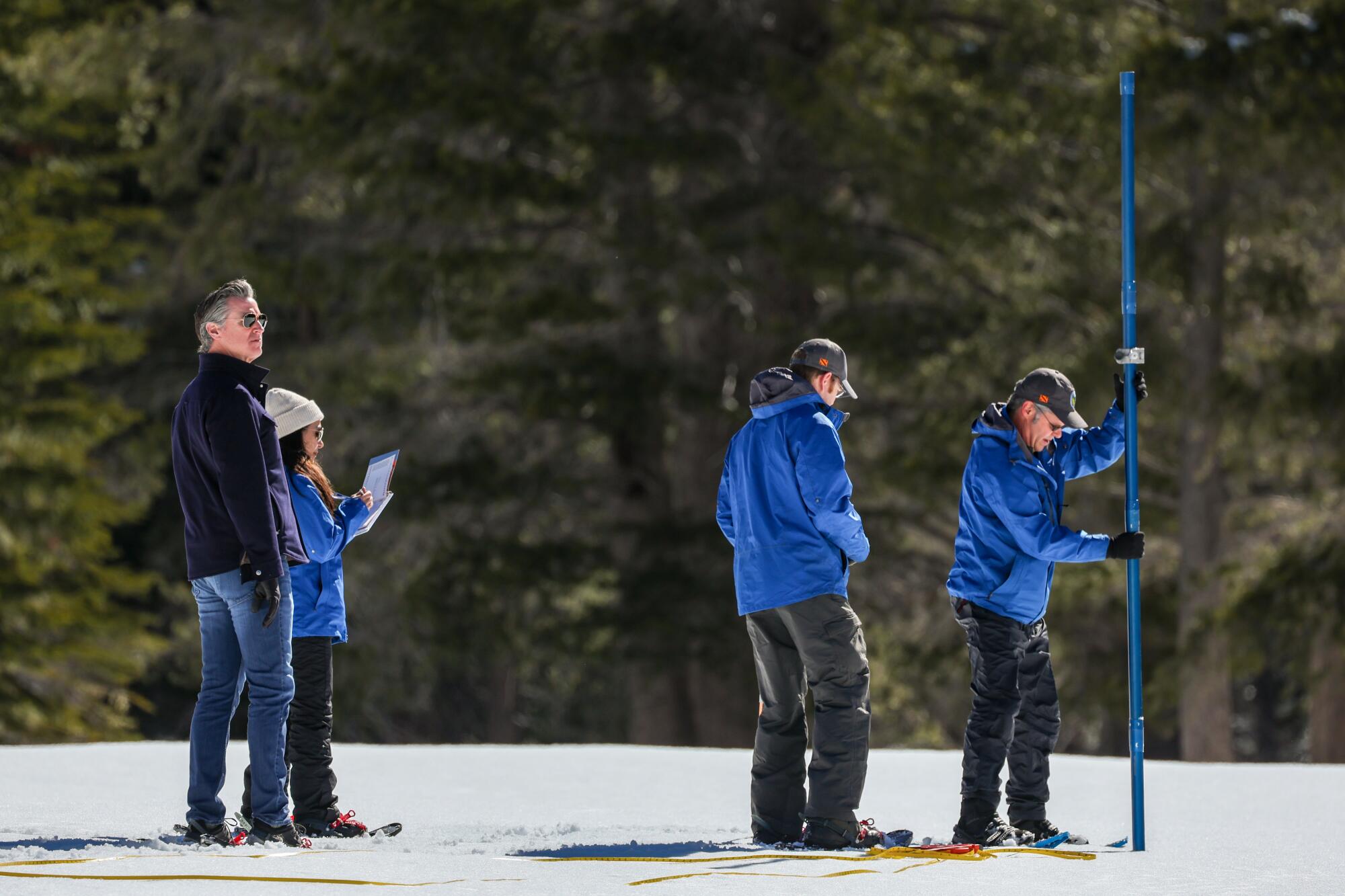
- Share via
Wearing snowshoes and aviator sunglasses, Gov. Gavin Newsom stood in a field near Lake Tahoe recently and listened as an engineer from the Department of Water Resources announced the results of California’s April snow survey, which is conducted every year when snow depths in the Sierra Nevada reach their maximum.
The news was good: the manual survey, conducted by driving blue metal tubes into the ground, had measured 64 inches of snow — 13% above average for the location and time of year — all but guaranteeing that the state would not see a severe drought this summer.
This marked the second year in a row with above-average snowfall and was a huge turnaround from conditions at the beginning of 2024, when the snowpack across the state was barely a quarter of the historic average.
But despite the cheerful tone, everyone assembled in that field — the governor, the engineers, the director of the DWR who declared that “average is awesome!” — probably was mindful of the long, dry years of the recent past and the worrying fact that the future of California’s mountain snowpack looks grim.
Aggressive and impactful reporting on climate change, the environment, health and science.
The relationship between snowfall and climate change is not as simple as it might first appear. Though rising temperatures will cause some would-be snow to fall as rain, this is partly balanced out by the fact that precipitation will become more intense overall, since warmer air can hold more water vapor. Some parts of Alaska and Northern Canada have seen increases in snowfall over the last 40 years; in these frigid locales the amount of snow is more limited by cold weather, which decreases the amount of moisture in the air.
On the other hand, in parts of the country that are typically close to the “rain/snow line” — that is, places such as the mid-Atlantic states where snow is often only a few degrees from falling as rain — even a small amount of climate change reduces annual snowfall dramatically. It is almost certainly not a coincidence that last winter was the least snowy season on record in New York City, with Central Park receiving only 2.3 inches of snow between October 2022 and March 2023.
This graphic plots a 20-year history of the Sierra snowpack, recalling several other wet years and many more recurring spells of drought.
On the West Coast, another complicating factor is the presence of tall mountains. Mountains have a double effect on snowfall: not only are they colder than adjacent valleys, but they also increase precipitation by forcing moist air to rise and drop its water. As a result, the Sierras can experience blizzards that would be unfathomable in low-lying areas, such as a single storm in late March that deposited more than 10 feet of snow at the Sugar Bowl ski resort over four days.
Mountains also cause snow to stick around for longer periods of time than you would expect. Even in the far reaches of the Minnesota Northwoods, the snow is mostly gone by late April, but the central Sierra Nevada typically retains snow into early June. The combination of these factors means that mountain snowpack plays a crucial role in regional hydrology, since it acts as a sort of natural reservoir that stores substantial amounts of water during the winter and spring and disburses it over the course of the summer.
With the help of computer models, we can begin to disentangle the effects climate change will have on California’s snowpack over the coming decades. First, as temperatures get warmer the rain/snow line will move to higher altitudes, meaning that a greater proportion of precipitation will fall as rain. This will be moderately balanced by increased total precipitation, but climate models suggest that the net effect will be a decrease in snowfall everywhere except for the highest summits of the Sierra.
Finally, and perhaps most important, hotter temperatures will cause the snowpack to melt more rapidly, causing two opposite problems. Increased snowmelt in late winter will raise the risk of devastating flooding, as runoff from the mountains converges with heavy precipitation that is only growing more extreme. And during the summer months, when the state will need more water due to hotter and drier conditions, there will be minimal or no water left in streams and rivers that are fed by melting snow.
California has an above-average snowpack and the state’s reservoirs are mostly filled, bringing a substantial boost to water supplies.
To some extent, these problems can be addressed by increasing reservoir capacity to replace the “free” storage previously supplied by mountain snowpack. But building new reservoirs is a long and expensive process: the planned Sites Reservoir in the Sacramento Valley was proposed in the 1950s, abandoned in the1980s, resurrected in the 1990s and finally funded in 2018 with $816 million from California’s water bond (still only a fraction of the estimated $4-billion cost).
Once financing is secured for this project, there are still bureaucratic obstacles to overcome.
Work on Sites Reservoir’s nine dams has been delayed repeatedly by fights over environmental reviews and water rights, and even after Gov. Newsom used his authority under new amendments to the California Environmental Quality Act to expedite the judicial process, the earliest that this seven-year construction process will begin is 2026.
Maintaining the patience to see projects like this through —projects that will not result in an improvement in the state’s water conditions but will merely allow it to keep pace with the changing climate — requires the recognition that each announcement that reservoirs are at 100% capacity may not be a cause for celebration, but rather a missed opportunity to store even more water.
It also requires policymakers not to lose sight of the overall trend toward thinner and more transient snowpack, even after a few good years in a row.
Ned Kleiner is a scientist and catastrophe modeler at Verisk. He has a doctorate in atmospheric science from Harvard.

